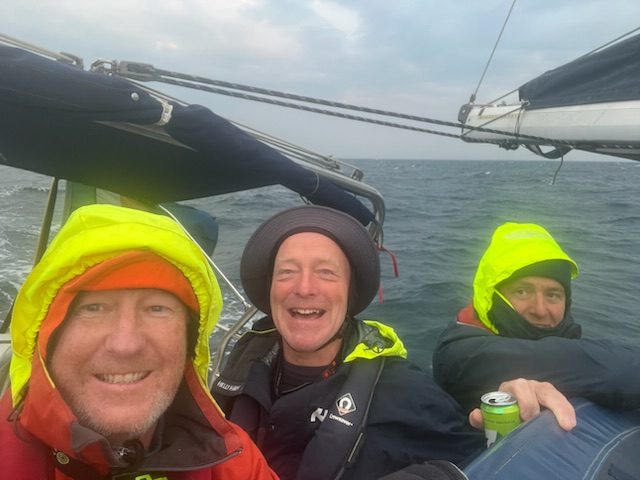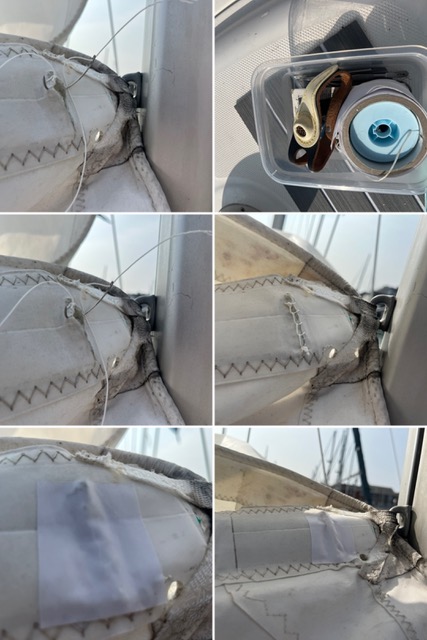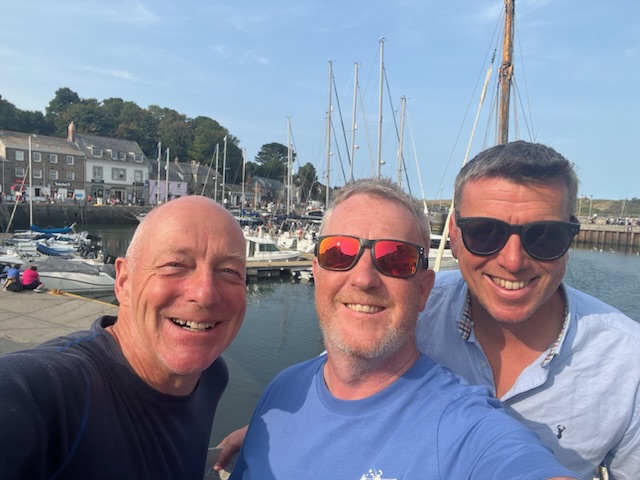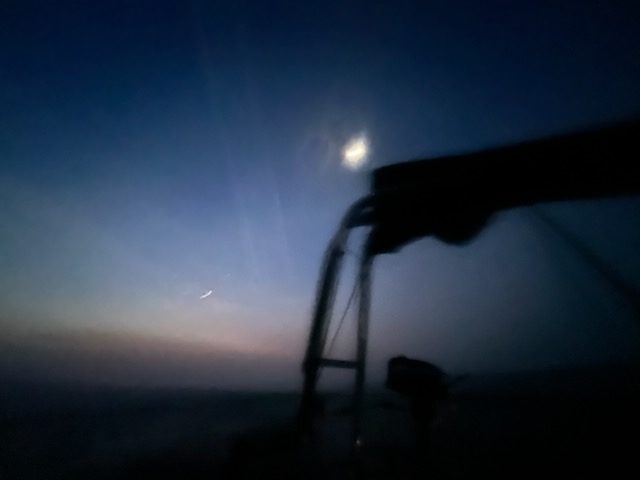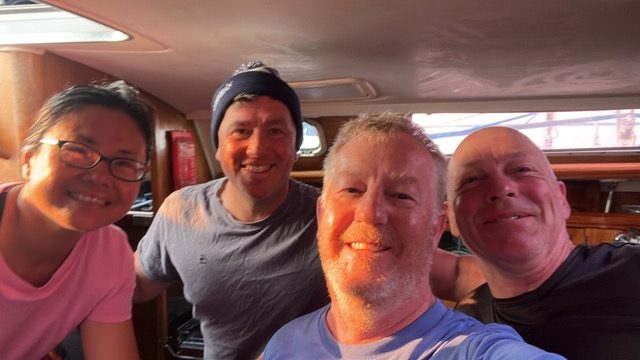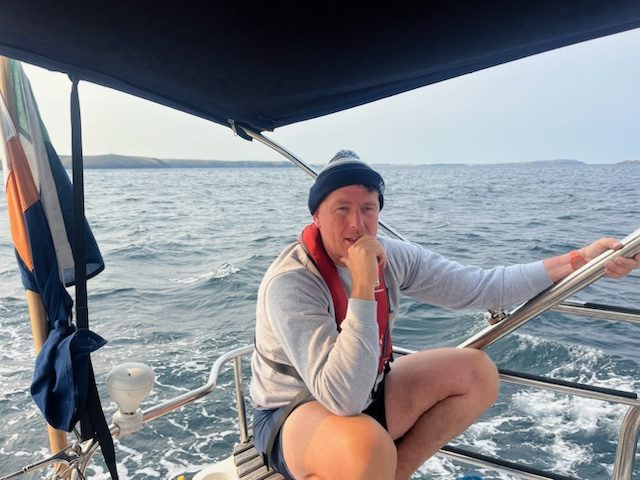Sailing Log: Padstow to Dungarvan (160nm)
We were up early the next morning, and Su Yin and I went for a 5k run along the famous Camel Trail—that lovely converted railway line that winds along the estuary. We finished at the little coffee stall for a well-earned flat white, the kind that tastes exponentially better after you’ve actually worked for it. We then walked back into Padstow proper, where breakfast was a fresh Cornish pasty, still warm and flaking pastry everywhere in the approved fashion.
Now it was time to tackle the job for the morning. The batten pocket on the mainsail had ripped such that the batten was poking forward into the mast, impeding bringing down the sail—which had been a bit of an issue the evening before when we were trying to get secured. The repair required unscrewing two plastic pieces at the clew, then using my sail repair kit and some sail tape to sew up the rip before replacing the plastic pieces that prevented the batten from re-ripping the pocket. Simple enough in principle, though as with most boat jobs, it took rather longer than anticipated.
I built up quite an audience at the quayside as I worked—people sat eating their fish and chips, watching the boat surgery unfold. Repair done, I turned around to find the plastic piece to reattach it, but it was nowhere to be found. As I looked about increasingly frantically, one of the onlookers helpfully mentioned that she had seen something fall overboard. Brilliant. Faced with the prospect of the batten ripping straight through the pocket without the plastic sheath to protect it, I popped downstairs and reappeared with a wetsuit, weight belt, and snorkel, ready to brave the distinctly smelly harbour water.
The water was so murky I couldn’t see more than two feet in front of me, and I couldn’t see the bottom at all. I decided to give it one go—dive down, sweep the area with my hands, and either find it or accept defeat gracefully. I took a deep breath and dived to the bottom. On my first attempt—Eureka! There it was, sitting innocently on the silt as if it had been waiting for me. When I surfaced with the missing part held triumphantly aloft, I got a round of applause from my fish-and-chips gallery. Glad to have provided some entertainment, at least. Job done, the sail was ready for heavy weather, which was fortunate timing.
The forecast was showing a sizeable system hitting the Isles of Scilly the next day and another system in the Irish Sea further north—we were threading a needle to get home before conditions deteriorated further. The winds looked to be in the 20-28 knot range for our passage, but the direction was favorable: northeast, which would be off our quarter, driving us forward rather than pinning us down. With boat maintenance complete, our crew for the passage—Peter and James—arrived from Newquay Airport. After a pleasant lunch, we did some shopping to provision for the next day’s passage, then had a few very pleasant pints in Padstow town center before treating ourselves to a meal at the famous Rick Stein’s Seafood Restaurant. Though expensive, it was genuinely friendly, and the food was really excellent. James entertained Tomás and many of the other customers with his magic tricks, adding an unexpectedly theatrical element to our pre-passage dinner.
The next morning we were up early for the 160-mile trip home to Dungarvan. The tidal gate was due to open at 9am, and we also had to break up the raft to get out—always a slightly fraught exercise when you’re conscious of other boats and tight timing. We were ready to go as soon as the gate opened, waving to Su Yin and Tomás as we motored out of the harbor and into the Camel estuary.
As soon as we hit open water, the wind really picked up. We had to put one reef in the mainsail, then a second reef, and ultimately half-furled the genoa as well. The sea swell was side-on, so we had to be careful—for a while we had to point upwind to keep the bow into the waves and avoid taking them on the beam. But once we found our rhythm, we absolutely hammered along. The favorable wind direction made all the difference, and we were making consistent speed even in the building conditions.
We ultimately achieved the passage from Padstow to Dungarvan in 22 hours, averaging 7.3 knots for the whole passage—a record run for us. As I had anticipated, the dodgiest part of the whole trip was the approach to Dungarvan when the strong northeast wind created a dangerous breaking sea at the harbor entrance. We were in familiar territory, however, and safely navigated into the harbor just in time for the tide, securing alongside with that particular satisfaction that comes from a fast passage executed well in challenging conditions. Home waters had never looked quite so welcoming.
